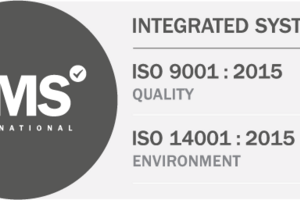14 July 2017
Why is human centric light a key business force for good?
A fundamental change is upon us; human centric lighting (HCL) is emerging as a top business driver. Within years, it will hugely affect schools, hospitals and offices.
Why? Right now, EU regulations are catalysing progress on smarter lighting. Among them are the Energy Performance Building Directive (EPBD).
EPBD doesn't mess about; it sets binding regulations on energy performance of EU building stock. It looks increasingly likely that EU energy efficiency regs will stay within The Great Repeal Bill, so EPBD means business, Brexit or otherwise.
So, we know EPBD is the top level change driver, and it's complemented by tool based work like ENER Lot 37; a recently completed EU study that examines, among other elements, how to set energy-efficiency requirements for system-wide lighting in buildings.
The minutiae of EU legisltion can be vexing for us all to understand, but the direction of travel is simpler. The truth is; system-wide, smarter lighting is well on the way to becoming a legal norm.
And with smarter light comes HCL, its natural partner. Those businesses who react, and install future-proof HCL systems now, are going to have myriad advantages in coming years.
What are the potential benefits of HCL, both legislative and practical?
When it comes to energy efficiency legislation, schools or offices often breathe fearfully. But thinking about the opportunities is far more useful.
No matter how energy law evolves in the UK, smart, efficient lighting will remain a key tool to meet regulatory requirements into the future.
After all, smart lights save energy. But they also deliver the infrastructure for scene setting and colour change, or Internet Of Things (IOT) compatibility.
When you have these elements in place, the logical path to using them with HCL is clear. After all, altering colour to suit daylight and mood, or linking your lighting in with IOT, to smarten how your lights react to employee numbers and presence, is precisely what HCL is all about.
Then, you can meet legal needs, while adding genuine value to your buildings too.
Smart means business
Smarter, efficient lighting is increasingly going to become part of regulatory requirements for buildings. And, here at Greenlite Group, we welcome this, because smart lights lower your carbon output and your energy costs. But what we really love is how using them as part of HCL offers great things too.
Our view is that if you have smart lights, you're just steps away from an office that feels more relaxing to work in, switches on and off automatically, sets mood lighting for how employees feel on a given day. That creates satisfaction, profit and performance. Which is a bonus for any modern organisation.
Often, energy efficiency regulations are seen as a pain. But with smart light, regulatory requirements could lead to happier, more productive and sensitive work environments, where HCL is the norm.
In a nutshell, smart, efficient lighting will be needed to meet regulatory requirements into the future. But smart lights also deliver the infrastructure for elements that lead logically, and essentially, to human centric lighting.
To learn how you can future-proof your office using human centric lighting, call us today.


